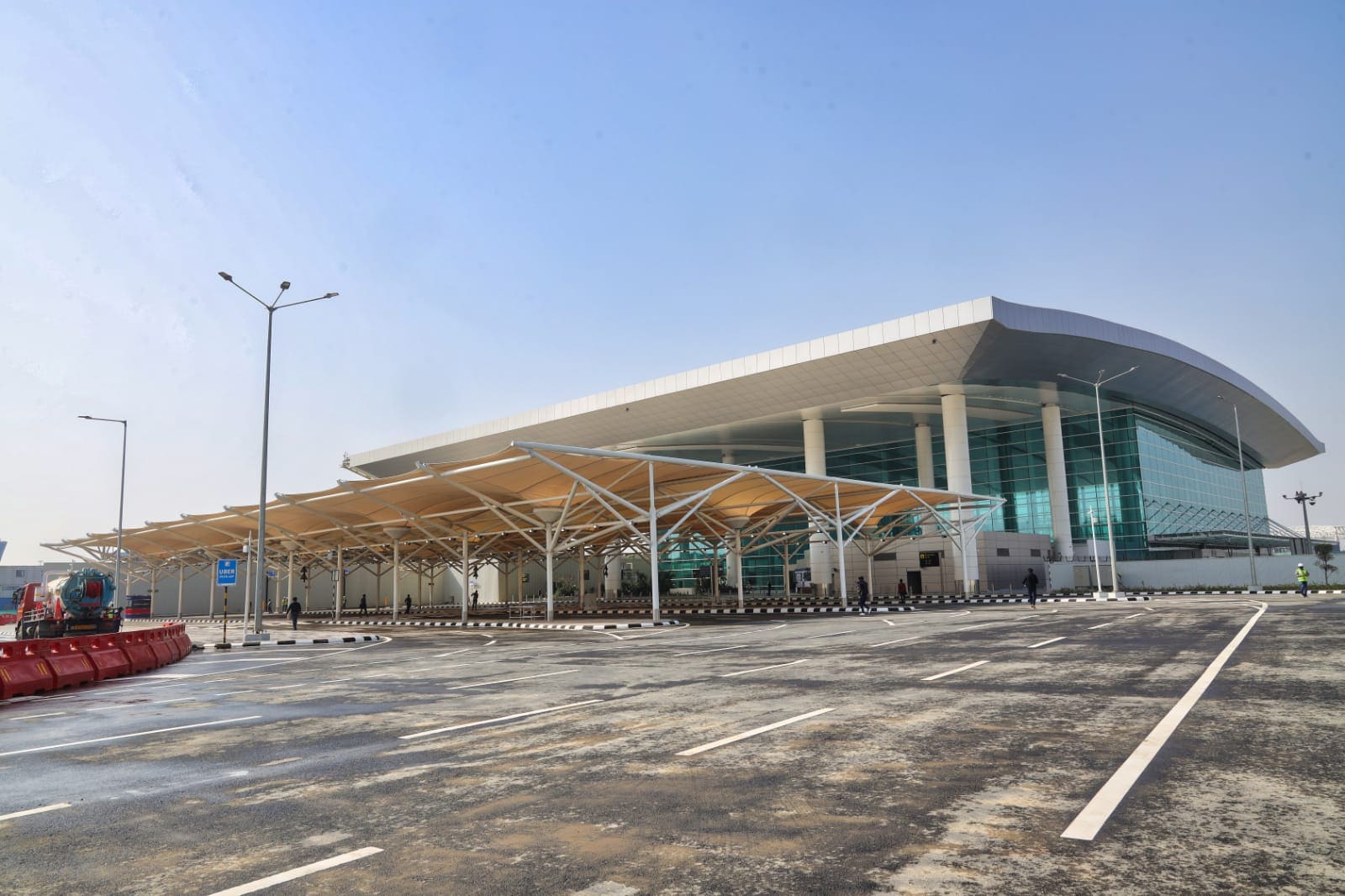“Discover how Delhi Airport achieved the prestigious Net Zero Carbon Emission status, becoming a global leader in sustainable aviation through innovative green initiatives and strategic carbon management, setting a new benchmark for airports worldwide.”
Introduction: Pioneering Sustainability in Aviation
In a landmark achievement, Delhi’s Indira Gandhi International Airport (IGIA) has become the first in India to attain the coveted “Net Zero Carbon Emission Airport” status. This accomplishment places the airport at the forefront of global sustainability efforts, setting a benchmark not just for Indian aviation but for airports worldwide. As climate change continues to dominate global discussions, this achievement by Delhi Airport signals a significant step forward in the aviation industry’s efforts to reduce its carbon footprint.
A Journey Toward Sustainability: The Path to Net Zero
1. The Initial Goal: Net Zero by 2030
Delhi Airport, managed by the Delhi International Airport Limited (DIAL), had initially set an ambitious target to achieve net zero carbon emissions by 2030. This goal was in line with the International Civil Aviation Organization’s (ICAO) objectives and the Paris Agreement’s vision of limiting global temperature rise to 1.5°C above pre-industrial levels. However, through a series of well-planned and executed initiatives, the airport achieved this target well ahead of schedule in 2024.
2. The Steps Taken: Key Initiatives and Innovations
Several innovative measures contributed to this success. The airport adopted renewable energy on a large scale, integrating both onsite and offsite solar power generation. Additionally, it developed green infrastructure across its premises, including energy-efficient lighting systems, advanced water and sewage treatment plants, and state-of-the-art fuel hydrant systems. A notable innovation was the introduction of TaxiBots, semi-robotic vehicles that tow aircraft from terminals to the runway, significantly reducing fuel consumption during ground operations.

3. Carbon Management: A Comprehensive Approach
Delhi Airport’s strategy involved meticulous carbon management, addressing both direct and indirect emissions. The Airport Carbon Accreditation (ACA) program, established by the Airports Council International (ACI), provided the framework. This program includes five levels of certification, with Level 5 representing the pinnacle of achievement. Delhi Airport achieved this level by reducing Scope 1 and 2 emissions by 90%, with the remaining emissions offset through approved carbon removal projects.
Challenges and Overcoming Them: A Story of Resilience
1. Overcoming Infrastructure and Operational Challenges
Achieving net zero carbon emissions was not without its challenges. The airport had to overhaul existing infrastructure and implement new technologies without disrupting operations. The integration of electric vehicles and the establishment of charging infrastructure were key steps. Moreover, the adoption of sustainable aviation fuel (SAF) is on the horizon, addressing Scope 3 emissions that encompass indirect emissions from sources like passenger travel and airline operations.
2. Stakeholder Engagement: A Collective Effort
DIAL’s success was also due to effective stakeholder engagement. Collaboration with airlines, government bodies, and technology providers was crucial in implementing sustainable practices. The airport’s management worked closely with these stakeholders to align their operations with the broader goal of carbon neutrality.

Impact on the Aviation Industry: Setting a New Standard
1. Leading by Example: A Global Benchmark
Delhi Airport’s achievement sets a new standard for airports globally. It demonstrates that with commitment, innovation, and collaboration, the aviation industry can significantly reduce its environmental impact. Other airports, both in India and around the world, are now looking to Delhi as a model for achieving similar goals.
2. Long-Term Benefits: Beyond Carbon Reduction
The benefits of achieving net zero carbon emissions extend beyond environmental impact. For Delhi Airport, this milestone enhances its reputation as a leader in sustainability, potentially attracting more international airlines and passengers who prioritize eco-friendly travel. Additionally, the reduction in energy consumption and operational costs associated with renewable energy and efficient technologies will have long-term economic benefits.
The Future of Sustainable Aviation
1. Continuous Improvement: Beyond 2024
While achieving net zero carbon emissions is a significant milestone, Delhi Airport’s journey does not end here. The airport is committed to continuous improvement, with plans to further reduce its carbon footprint and explore new technologies. The adoption of SAF and further advancements in energy-efficient infrastructure will be key focus areas in the coming years.
2. Inspiring Change: A Ripple Effect Across Industries
The success of Delhi Airport is expected to inspire other sectors to adopt similar sustainability goals. The aviation industry, often criticized for its environmental impact, now has a tangible example of how operational excellence and environmental stewardship can go hand in hand.
Conclusion: A Paradigm Shift in Aviation Sustainability
Delhi Airport’s attainment of Net Zero Carbon Emission status is more than just an isolated achievement; it represents a paradigm shift in how airports, and indeed the entire aviation industry, approach environmental responsibility. This milestone demonstrates that with foresight, innovation, and collaboration, even the most complex and carbon-intensive industries can make significant strides toward sustainability.The proactive measures taken by the airport—ranging from large-scale adoption of renewable energy to the implementation of cutting-edge technologies like TaxiBots—serve as a blueprint for others. These initiatives not only address current environmental challenges but also lay the groundwork for future advancements in sustainable aviation.Beyond its environmental impact, this achievement also sets a powerful example of leadership. Delhi Airport’s success will likely inspire airports around the world to accelerate their own sustainability initiatives, fostering a global movement towards greener aviation. The economic benefits, coupled with the enhanced global reputation, position Delhi Airport as a pioneer in the industry’s inevitable transition towards sustainability. Looking forward, the journey does not end here. The airport’s commitment to continuous improvement and its role as a leader in environmental stewardship ensure that it will remain at the forefront of sustainable development in the aviation sector. As other airports and industries follow Delhi’s example, the vision of a more sustainable, environmentally conscious future becomes increasingly achievable.
Delhi Airport’s success story reminds us that with determination, innovative thinking, and collective effort, it is possible to meet the challenges of climate change head-on and make substantial contributions to a more sustainable world. This achievement is a milestone not only for the airport but for global aviation, offering hope and a clear path forward for an industry often criticized for its environmental impact.
Disclaimer:
The information provided in this blog is based on publicly available sources and recent updates as of August 2024. While every effort has been made to ensure accuracy, the details presented may evolve as new developments occur. Readers are encouraged to verify the information and consult official sources for the most current updates. This blog does not constitute professional advice and should not be used as the sole basis for decision-making regarding sustainability practices in aviation or related industries. The views expressed are those of the author and do not necessarily reflect the official stance of Delhi Airport or its management.




